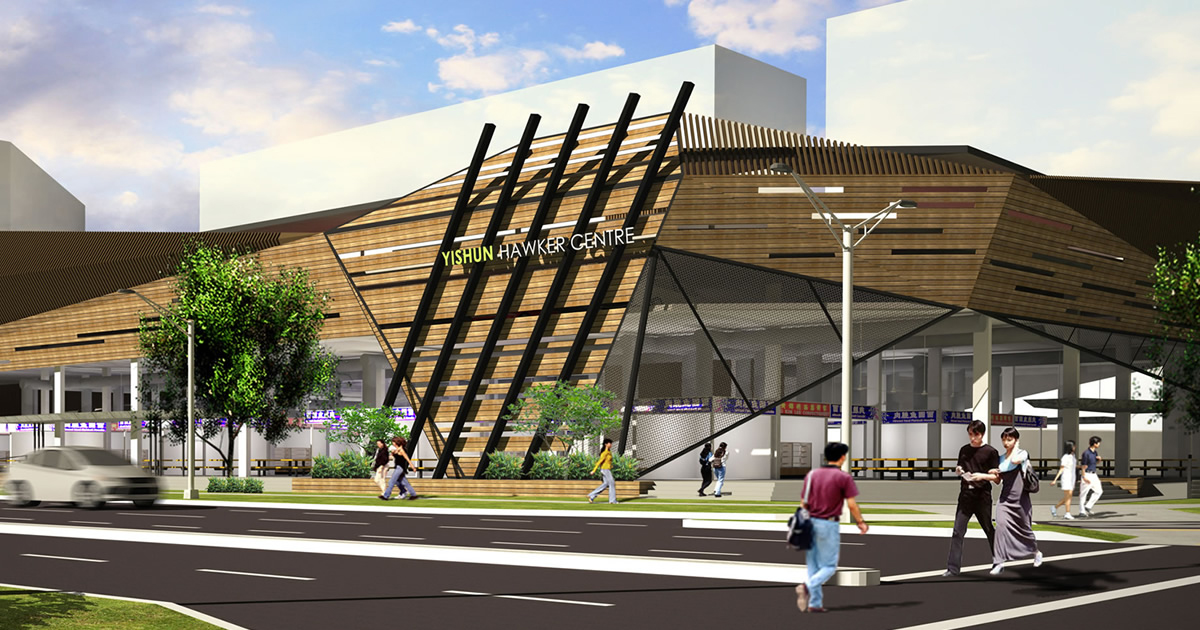"Socially-conscious enterprise hawker centres" (SEHCs) has become a contentious term recently.
Private social enterprises were invited by the government to operate hawker centres with the thinking that they would better improved the way hawker centres are run, and help attract young hawkers.
These goals were marred by recent allegations that SEHC operators are unfairly profiteering off the hawkers who rent stalls with them, and complaints that there aren't enough people eating at SEHCs.
We spoke to two young hawkers in their 20s, Jack* and Mark*, at Yishun Park Hawker Centre to find out about their experiences working there.
Consistently low human traffic at Yishun Park Hawker Centre
Yishun Park Hawker Centre (YPHC) is operated by the Timbre Group.
Opened in September 2017, the hawker centre marketed itself as the "home of hawker heroes".
Indeed, there was a variety and range of hawker food available, if one were to find time to discover them.
This is because after half a year after its much publicised opening, complaints about YPHC's low human traffic began to surface.
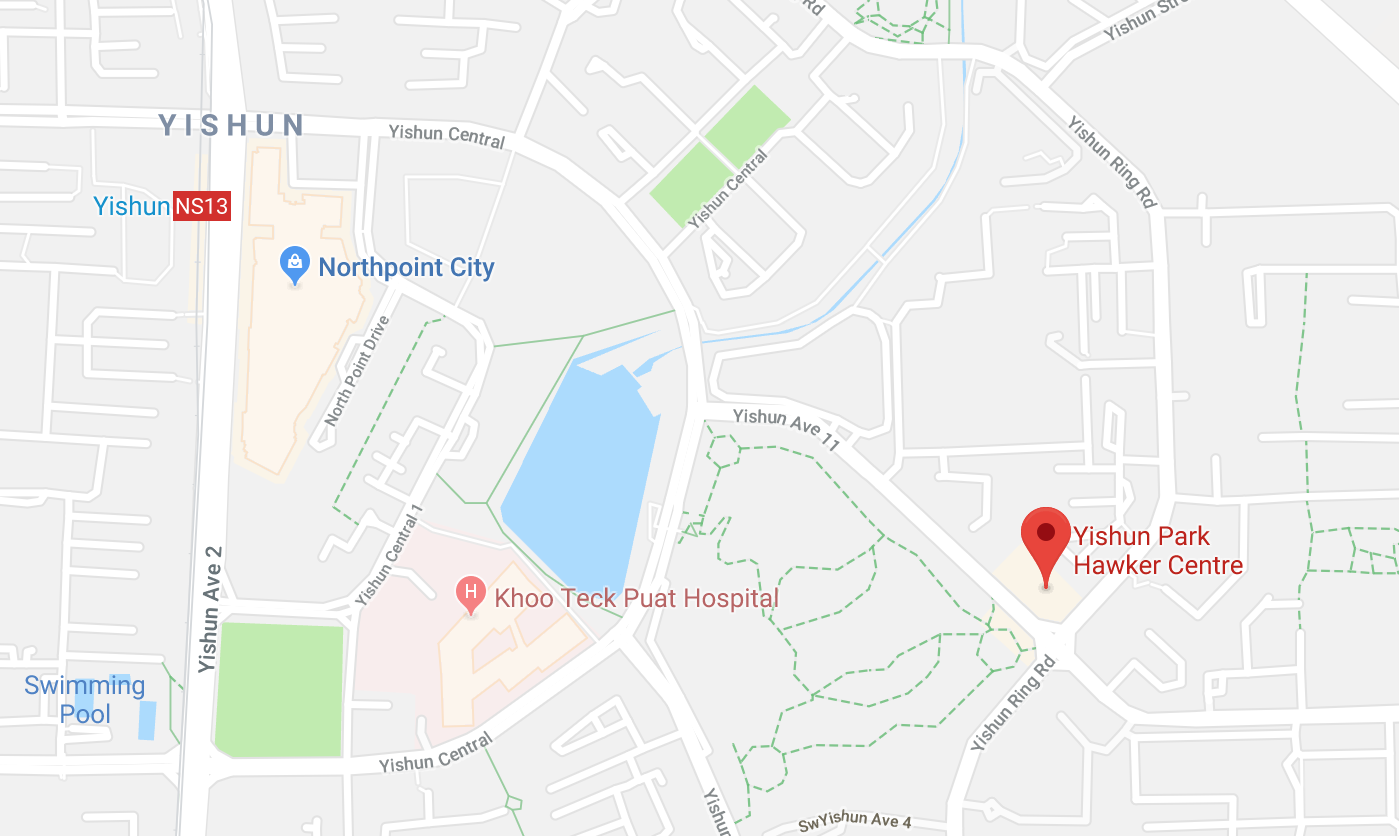 Yishun Park Hawker Centre is situated 1.3km away from Yishun MRT station and Northpoint. Getting there requires a car, public bus, or if you're valiant enough to walk, a good amount of stamina. (Screenshot from Google Maps)
Yishun Park Hawker Centre is situated 1.3km away from Yishun MRT station and Northpoint. Getting there requires a car, public bus, or if you're valiant enough to walk, a good amount of stamina. (Screenshot from Google Maps)
Due to YPHC's location in a residential estate, the hawkers tell us they see few customers for the most part of a given day due to the lack of an office crowd.
Human traffic on a weekday is unpredictable, according to Jack.
On a good weekday, Jack estimates that he can serve 30 to 40 tables. Roughly two-thirds of this business comes at dinnertime.
"It’s not empty (on weekdays)," he said, "but it’s considered quite quiet".
Jack shared that his weekday earnings range between S$400 and S$800.
Business on weekends is slightly better — Jack is able to go above 40 tables, and the dinner crowd is more consistent.
During the weekends, he tells us he can earn between S$1,300 and S$1,800.
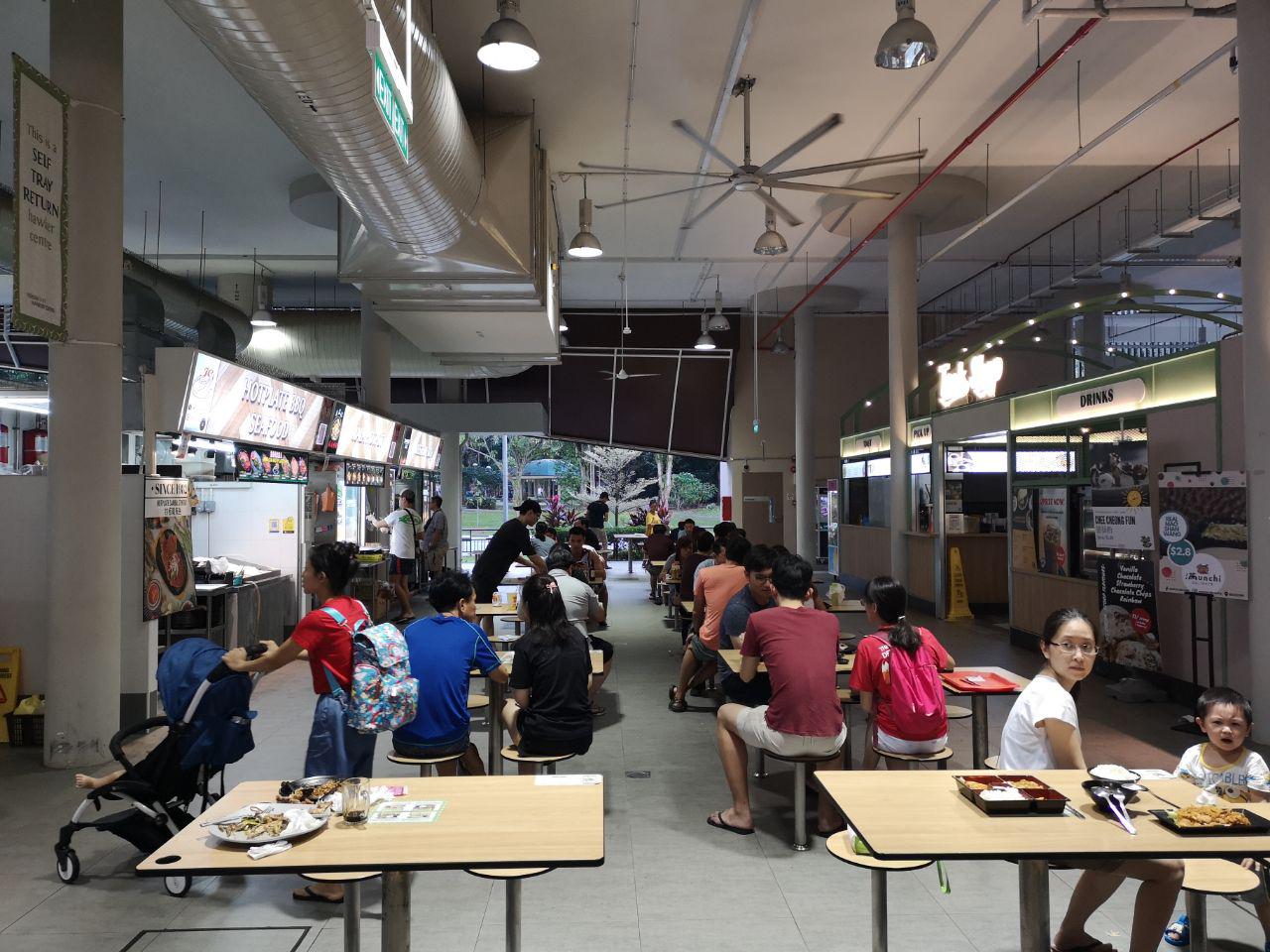 Yishun Park Hawker Centre on a Sunday night. There was a sizeable crowd but no one needed to wait for a table. Photo by Joshua Lee.
Yishun Park Hawker Centre on a Sunday night. There was a sizeable crowd but no one needed to wait for a table. Photo by Joshua Lee.
Mark declined to share his earnings, but said he usually issues about 40 to 50 receipts on weekdays and 70 to 90 on weekends.
Occasionally, marketing efforts by Timbre (more on that below) or media publicity might increase human traffic by about 15 to 20 per cent, according to Mark.
"But that's a short-lived thing, about one, two weeks then the crowd for your stall will die down again," he added.
For Mark, working in the food & beverage (F&B) industry has always been a dream for him.
So when the news of a hawker centre opening near his home was announced in the media, he jumped at the chance to open a stall.
He soon found out that the situation on the ground wasn't as rosy as as he thought:
"I don't blame anyone. I blame myself because if you studied the demographics (of this area), there's no lunch crowd. Even for dinner crowds, if there's, let's say, an MRT breakdown and delay, people will just settle for food nearer to Yishun MRT."
"If I had studied properly, I wouldn't have chosen Yishun Park Hawker Centre," he admits. "Weekends are good lah, but the weekdays are... terrible. Five days (of low traffic) leh."
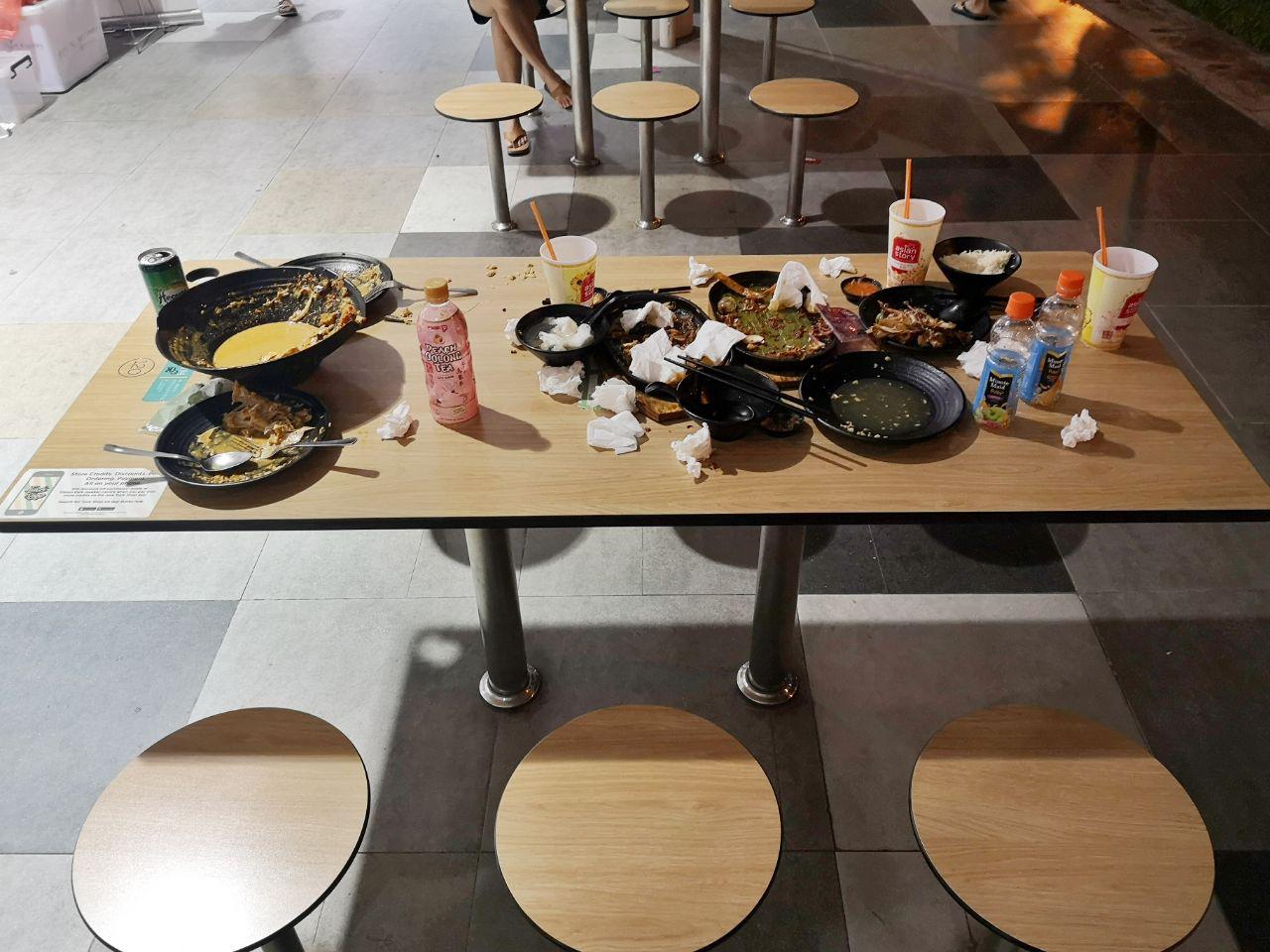 Despite implementing a 50-cent tray return deposit, some customers still choose to leave their used utensils and cutlery on their tables. Thankfully, this was not a common sight at the hawker centre. Photo by Joshua Lee.
Despite implementing a 50-cent tray return deposit, some customers still choose to leave their used utensils and cutlery on their tables. Thankfully, this was not a common sight at the hawker centre. Photo by Joshua Lee.
Timbre dangles free kopi, lunchtime shuttle
Now to be fair, the concerns of YPHC's hawkers were not ignored.
Timbre has been putting up various initiatives such as free lunchtime shuttle buses and free lunchtime parking in a bid to attract customers during lunchtime on weekdays.
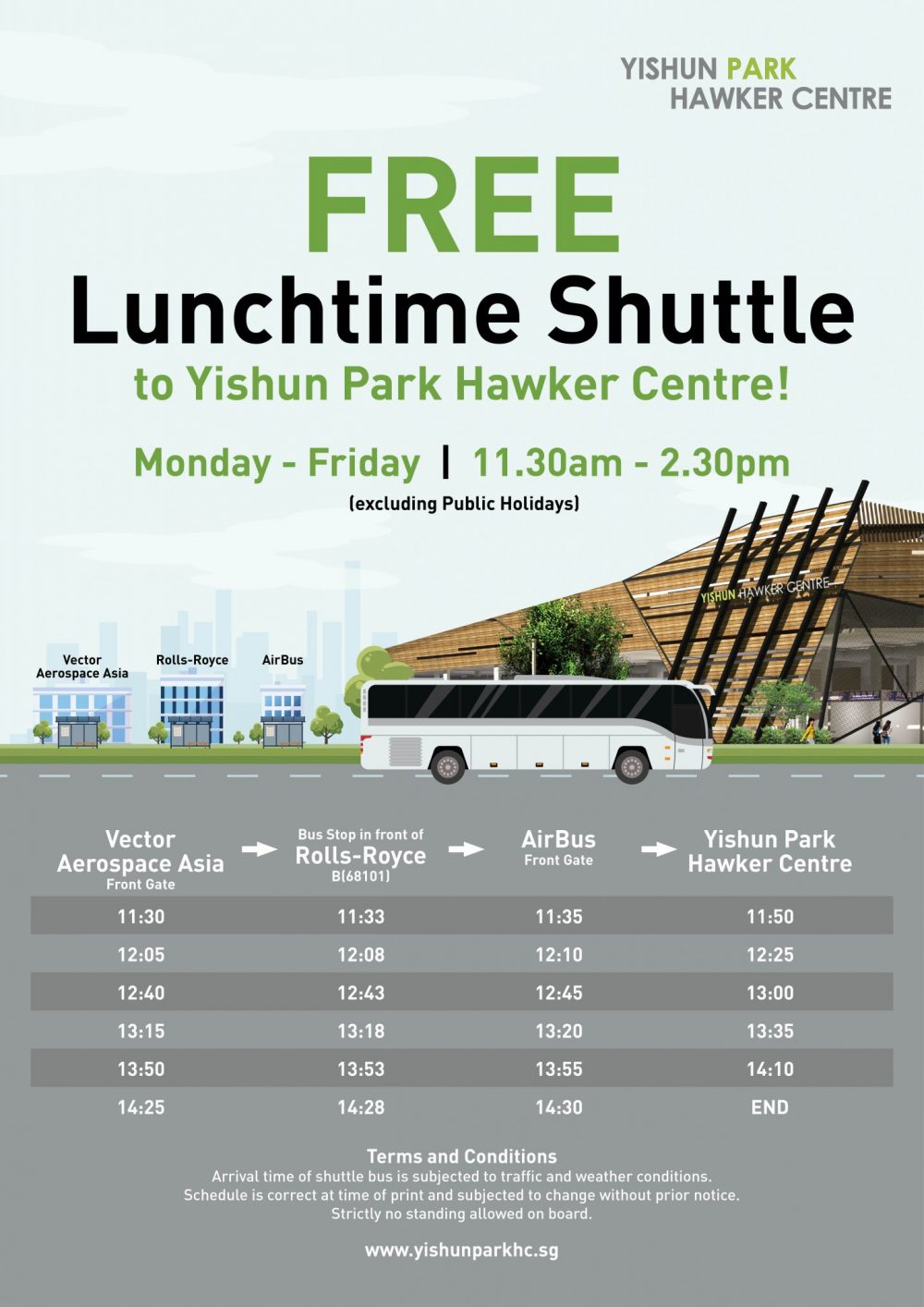 Timbre offers free lunchtime shuttle service to attract the office crowd from nearby industrial areas. Via.
Timbre offers free lunchtime shuttle service to attract the office crowd from nearby industrial areas. Via.
Aside from that, the operator also dangles offers like free kopi and themed events in the hopes of drawing people:
 Customers can get a free cup of kopi when they have their breakfasts at YPHC. Via YPHC.
Customers can get a free cup of kopi when they have their breakfasts at YPHC. Via YPHC.
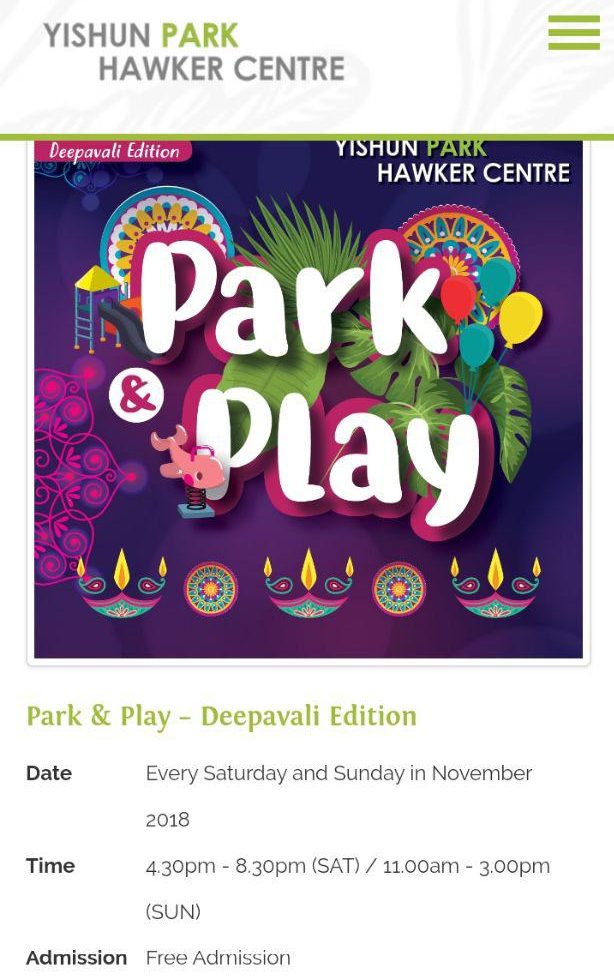 A Deepavali themed event for the weekends in November. Via YPHC.
A Deepavali themed event for the weekends in November. Via YPHC.
These measures, thankfully, are working.
Both Jack and Mark noticed a higher number of patrons at their stalls when they were implemented.
But people are still just not coming
However, like painkillers taken to numb a persistent migraine, they feel these measures aren't able to fundamentally address the long-term issue of YPHC's generally small customer base.
Hawkers at YPHC also have other grouses, such as an app that gives diners 10 per cent off whatever they order — that, of course, eats into their profits — and the 50-cent tray return deposit (brought down from S$1 after the hawkers complained) that they argue dissuades customers from eating there.
Mark and Jack both agree, though, that these are peripheral to the central issue of there being too few diners at the hawker centre.
"If the footfall is high, who would complain?" said Mark.
The situation of a lack of visitors to the hawker centre is so tricky for them that they're no longer certain about the viability of their businesses.
"[I'm] not confident that it’s sustainable in the long run," said Jack.
"I don't know what's going to happen next," said Mark, "and I don't want to make any drastic moves now. I want to try to focus on my current business."
Unfortunately, it is young hawkers like Jack and Mark are the ones SEHCs are trying to woo.
The government is also doing more to support them -- National Environment Agency (NEA) will help pay for half of the SEHC hawkers' dishwashing services in 2019, and 30 per cent in 2020.
But Mark questioned the government's 2011 promise to build 20 new hawker centres by 2020 (seven, including YPHC, have been built since then).
"Look into your planning. Don't keep on telling people you're going to build another 20 more hawkers centres. So what?"
Location issue not isolated to Yishun Park
YPHC isn't the only SEHC to suffer from a lack of human traffic.
According to hawker food advocate KF Seetoh, Pasir Ris Central Hawker Centre, a SEHC managed by NTUC FoodFare, also faces the same problem:
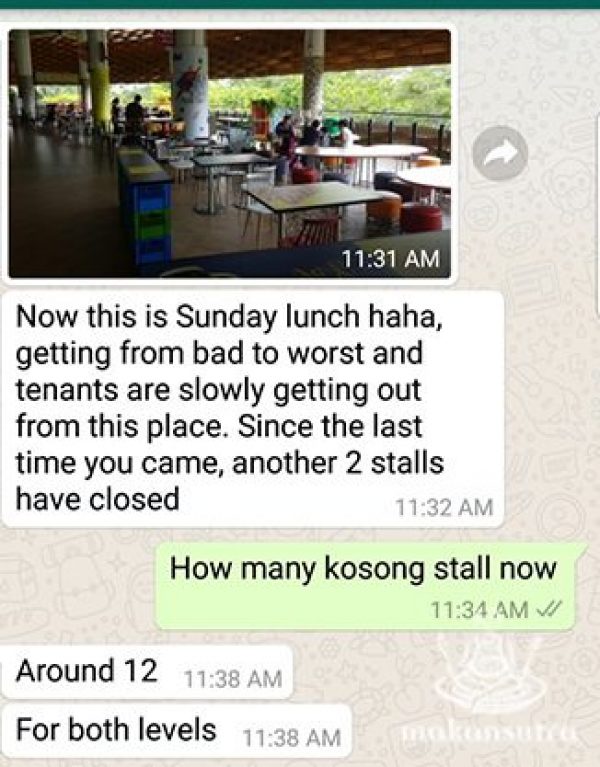 This is a chat Seetoh had with a hawker from Pasir Ris Central Hawker Centre. Source: Makansutra
This is a chat Seetoh had with a hawker from Pasir Ris Central Hawker Centre. Source: Makansutra
This is a fact that NTUC Foodfare's CEO Perry Ong acknowledged publicly before:
“Unfortunately, for Pasir Ris Central Hawker Centre, the footfall is a bit weak so hawkers are finding it a little bit more difficult. Even though they have agreed upfront — in fact, they were very happy when they got selected — but when they realise that they don’t have enough business, it goes back to the cost.”
It is the same story over at Jurong West Hawker Centre, which is run by Hawker Management, a subsidiary of Koufu.
A hawker who used to work there told TODAY that footfall was so bad that sometimes her gross earnings only amounted to S$300 per day after 10 hours of business.
Many of Jurong West Hawker Centre's tenants have also relocated because of the low human traffic.
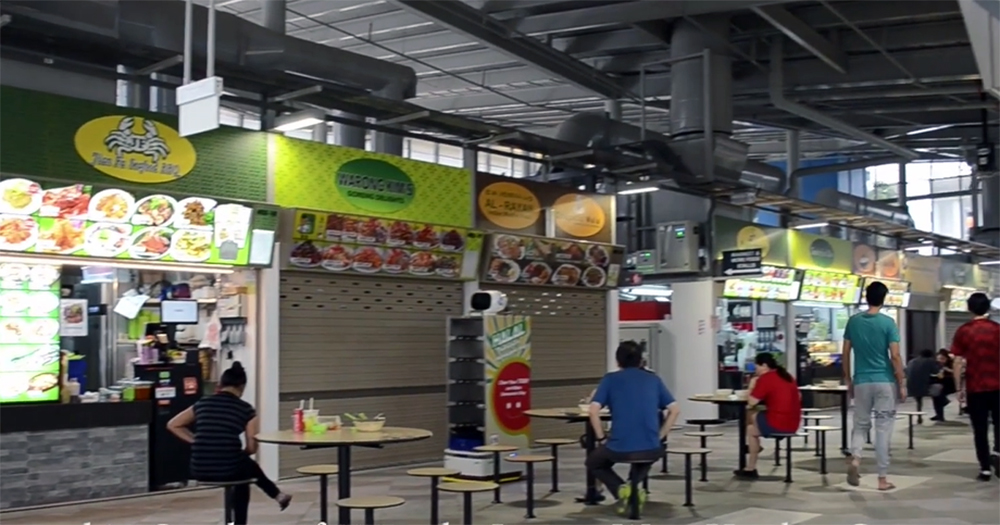 Jurong West Hawker Centre. Via Google Maps.
Jurong West Hawker Centre. Via Google Maps.
Operating 24/7
Over at Our Tampines Hub hawker centre, the issue they faced wasn't location but financially unsustainable operating hours — tenants were previously contractually obliged to stay open round the clock.
The hawker centre is operated by OTMH, the social enterprise arm of Kopitiam.
According to Minister for the Environment & Water Resources Masagos Zulkifli, this was an arrangement requested by the residents in Tampines.
However, reality panned out differently. The hawker centre saw very few customers in the early hours of the morning.
Hawkers said that staying open overnight can sometimes mean fewer than 10 customers served, which did not make financial sense for them.
The 24-hour requirement was ultimately removed. One hawker told The Straits Times that he could save up to S$3,000 from doing away with the need for an assistant to cover 12-hour shifts.
Hawker food advocate KF Seetoh: "Stop building hawker centres"
SEHC hawkers aren't the only ones talking about the apparent demand-supply mismatch facing the new hawker centres that are coming up.
Seetoh also recently pointed out that the low foot traffic at many new hawker centres is the result of being placed in what he describes as "less-than-favourable sites in far-flung locations already well-served by private coffeeshops and food courts".
This situation makes it difficult for hawker centres to serve their social function of "(bonding) and (serving) the folks with meaningful and affordable fare".
Providing some suggestions he had to tackle this, Seetoh also argues that the hawker centre should be treated like a public amenity akin to “government hospitals, schools and even police centres” and not be given to “private players” who are more conscious about profits.
More stories about the state of hawker culture in Singapore:
Top image via Yishun Park Hawker Centre's Facebook page
If you like what you read, follow us on Facebook, Instagram, Twitter and Telegram to get the latest updates.
